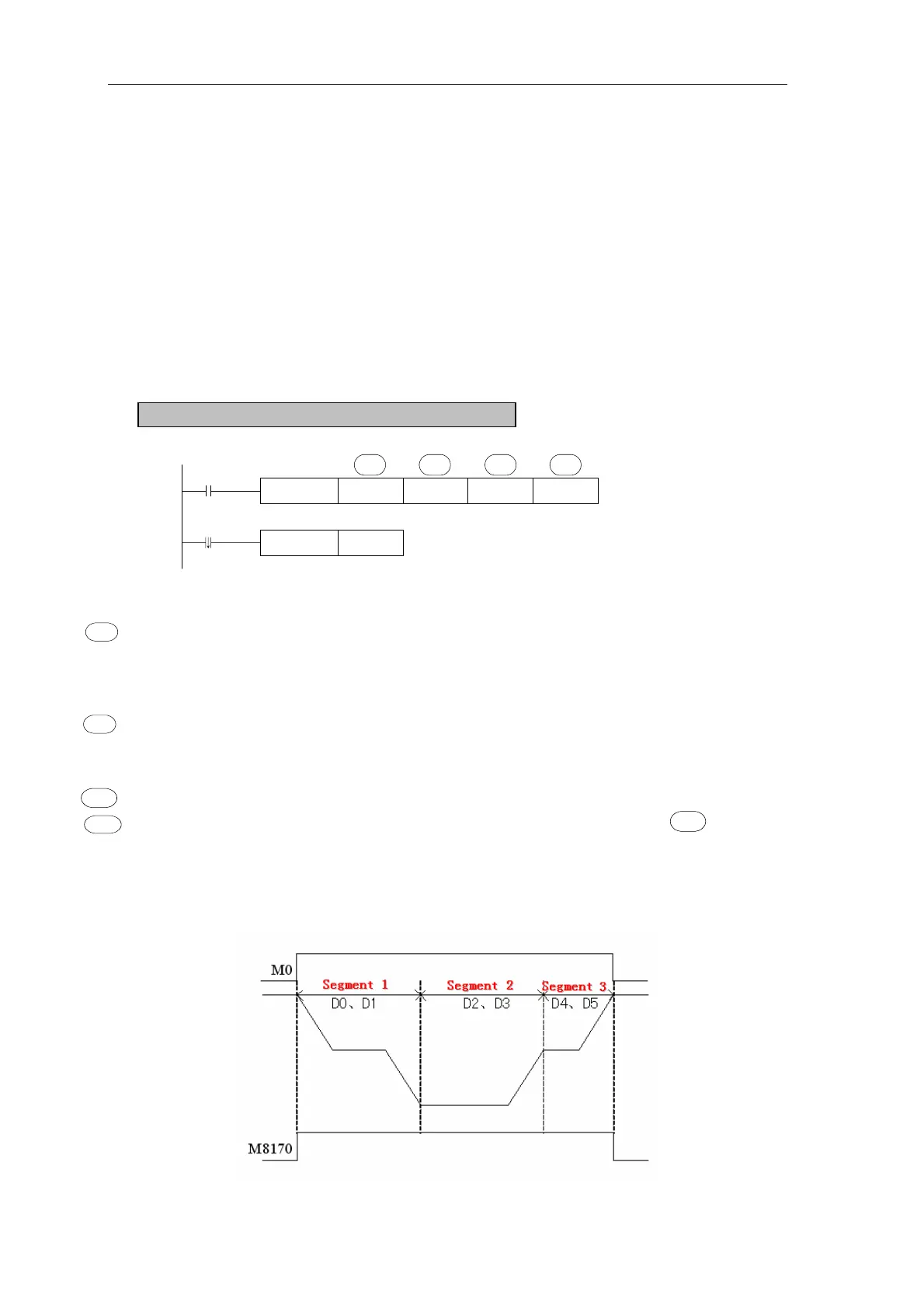Applied Instructions
3, Dual Pulse Output with speedup/speed-down
• y: 0~400KHz
• Speedup/spe
• Output Term
• Direction ou ny Y
• Output Mode: Limited number of pulse
• Pulse Number: 16 bits instruction: 0~K32767
32 bits instruction: 0~K2147483647
z Instruction: PLSR
PLSR: Generate certain pu gned frequency and speedup/speed-down time.
Dual Pulse Output with Speedup/Speed-down
Frequenc
ed-down time: Below 5000ms
inals: Y0 or Y1
tput terminal: A
lse with the assi
¾
PLSR D0 D100 Y0
RST M0
M0
M8170
S1·
S2·
Y3
D1·
D2·
z Generat tain pulse with the assigned frequency, speedup/speed-down time, pulse direction.
which takes Dn or FDn with the start addr example, D0 set the max
of segment 1, D1 set pulse number of segment , D3
umber of segment 2, …… if Dn、Dn+1 are n set 24
segments at most. Operands: D, FD.
Speedup/speed-down time, here the time means the speedup time from the start to the highest frequency.
At the same time all segments’ frequency and time slope is defined, so the following speedup/speed-down
format all do according to them. Operands: K、TD、CD、D、FD
Assign Y number of output pulse, can only output at Y000 or Y001
Assign Y number of output pulse direction, can be assigned at your will. E.g. In , if the pulse
number is a positive value in segment 1, Y output ON; if be negative, Y is OFF. Please note: in once
segment pulse output, pulse’s direction is only determined by the pulse number set value (positive or
negative) of the first segment.
e cer
ess. In the precedingAn area
S1·
S2
1. D2 set the max frequency of segment 2
both 0, it means segment finish. You ca
frequency
set pulse n
·
D1·
S1·
D2·
218
